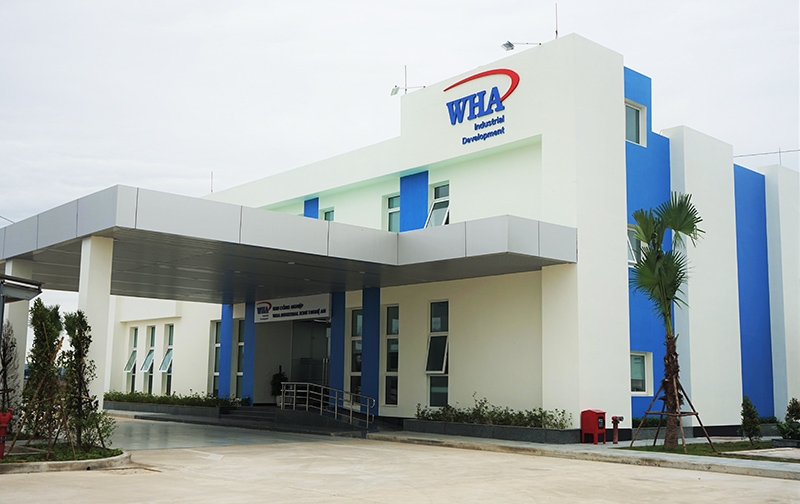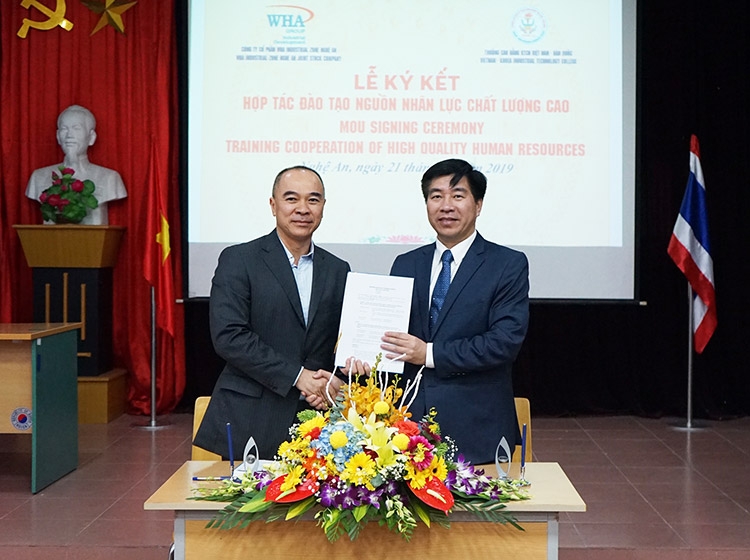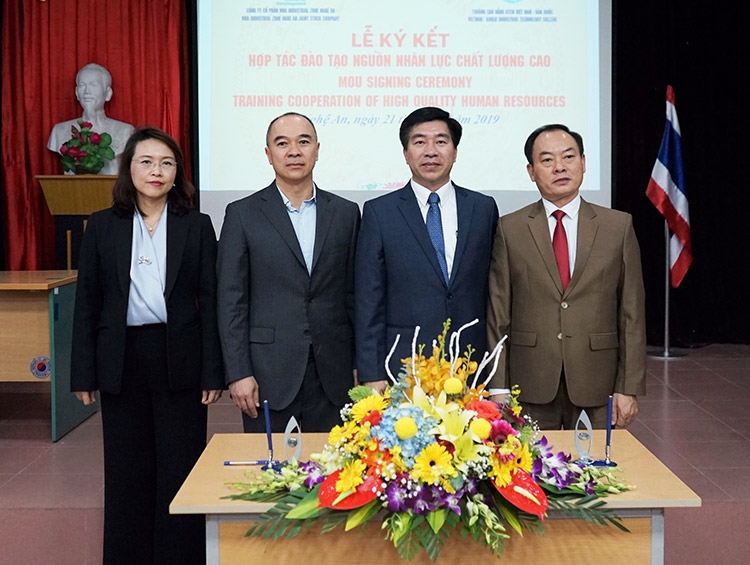Nghe An has been a favoured destination for foreign investors
 |
| The central province of Nghe An has been a favoured destination by foreign investors thanks to its strategic location and improving infrastructure. |
Vietnam continues to be a magnet for attracting foreign direct investment (FDI). As of October 2019, FDI into Vietnam rose by 7.4 per cent on-year – showing an increase in investor confidence. However, some analysts have pointed out that certain bottlenecks have emerged in Vietnam that may limit how much the country could accommodate foreign capital inflows.
One major constraint in Vietnam is the lack of human capital, according to analysts from Fitch Solutions. Vietnam has a young and growing labour force – defined as people aged 15 and older who are employed, and those unemployed but seeking work. However, the size of this workforce is much smaller than that of other manufacturing hubs like China.
“If we look at Vietnam, it has a population that is 14 times smaller than China, which also means that the risk of labour shortage is much higher when we compare the two countries,” Kenny Liew, an analyst at Fitch Solutions, said in a recent conference call.
Indeed, labour shortages have been a lingering problem for many localities, from Vinh Phuc and Quanh Ninh in the north to Danang in central Vietnam to Ho Chi Minh City, Binh Duong, and Dong Nai in the south.
To tackle this human capital bottleneck, Vietnamese authorities and human resources firms are encouraging business leaders to provide more support for their workforce and create more favourable conditions, such as facilitating labour market information and publicising recruitment needs; promoting employment service centres; reinforcing the co-ordination between training institutions, enterprises, and local authorities; and supporting the development of social housing, cultural institutions, and schools.
 |
| Nguyen Huu Duc and Ho Van Dam: signing and exchanging the MoU |
Nghe An’s dynamic workforce and favourable location
In this context, Nghe An is becoming an attractive investment destination with a large population of 3.2 million people, 1.9 million of whom are in the working-age bracket. By 2025, it is forecast that the province’s population will increase to about 3.5 million, with a workforce of over 2.1 million.
However, an abundant workforce does not translate to high productivity so Nghe An has made efforts to expand the education of skilled workers and improve labour productivity. In terms of education and training infrastructure, the province is home to seven universities, six colleges, four professional schools, and 67 vocational training schools. Since 2013, Nghe An has generated over 37,000 new jobs every year and aims to generate employment for over 223,000 workers by 2020.
Furthermore, Nghe An has provided assistance to workers returning from abroad. Specifically, the province not only trains these workers to meet the demand of Vietnamese factories but has also built a policy to help them settle down. As a result, factories in Nghe An can easily recruit workers and high-skilled employees to facilitate their manufacturing activities and business plans.
Above all, Nghe An boasts a favourable geographic location to support import and export activities. Specifically, the province has Vinh City International Airport, an 82km coastline with convenient access to three deep-sea ports, a railway network that connects the north to the south, and eight national highways running through it. Also, a new expressway connecting Hanoi to Vinh City is slated to be completed in 2022 to improve the province’s connectivity.
 |
WHA Industrial Zone - Nghe An capitalises on the growth opportunity
WHA, Thailand’s leading developer of industrial estates, utilities, power, and property solutions, has built WHA Industrial Zone in Nghe An to serve both local and foreign workers. With an investment of $100 million, the 498-hectare Phase 1 of WHA Industrial Zone is part of a long-term plan potentially totalling up to 3,200ha in Nghe An province, 290km south of Hanoi.
“Vietnam is a major investment destination among ASEAN countries,” explained Jareeporn Jarukornsakul, chairman and group CEO of WHA Corporation PCL. “With the support of the Vietnamese government and provincial authorities, Nghe An province is becoming an integrated hub for business, education, manufacturing, transportation, and logistics, contributing further to the development and economic growth of Vietnam and the region,” she said.
WHA Industrial Development Pcl. has a reputation of almost 30 years for quality industrial estates developed throughout Thailand. The extensive experience of WHA Industrial Development Pcl.'s management team will enhance the development of WHA Industrial Zone 1 – Nghe An to meet the requirements of world-class standards.
In addition, through an expansion in integrated solutions and services across world-class logistics, industrial development, utilities and power, and digital platforms, the company ensures businesses are supported to maximise their efficiency and potential.
It is clear that the new industrial zone development in Nghe An represents opportunities for manufacturers, distributors, and investors to scale up presence in Vietnam and the Southeast Asia region. Indeed, several local and foreign investors have started manufacturing activities in WHA Industrial Zone – Nghe An, which will create more jobs to the locals as well as improve their career prospects.
What the stars mean:
★ Poor ★ ★ Promising ★★★ Good ★★★★ Very good ★★★★★ Exceptional
Related Contents
Latest News
More News
- First members of Danang International Finance Centre revealed (December 22, 2025 | 17:39)
- Securing capital and efficiency for Vietnam’s 2026-2030 growth ambitions (December 17, 2025 | 10:00)
- Driving double-digit growth through green and circular transformation in Vietnam (December 17, 2025 | 09:00)
- Vietnam bucking trend in the global M&A landscape (December 16, 2025 | 14:20)
- Vietnam’s green transition demands collective financial action (December 15, 2025 | 12:00)
- VIR workshop highlights capital and policy for sustainable development (December 15, 2025 | 11:00)
- National Assembly approves pilot mechanisms to accelerate major projects in Hanoi (December 12, 2025 | 11:29)
- Vietnam eases policy approval requirements, simplifies foreign and outbound investments (December 11, 2025 | 17:53)
- Unpacking new momentum in Vietnam’s M&A market (December 10, 2025 | 09:59)
- Forum honours outstanding M&A deals, strategies, and advisory firms (December 09, 2025 | 18:22)

 Tag:
Tag:





















 Mobile Version
Mobile Version